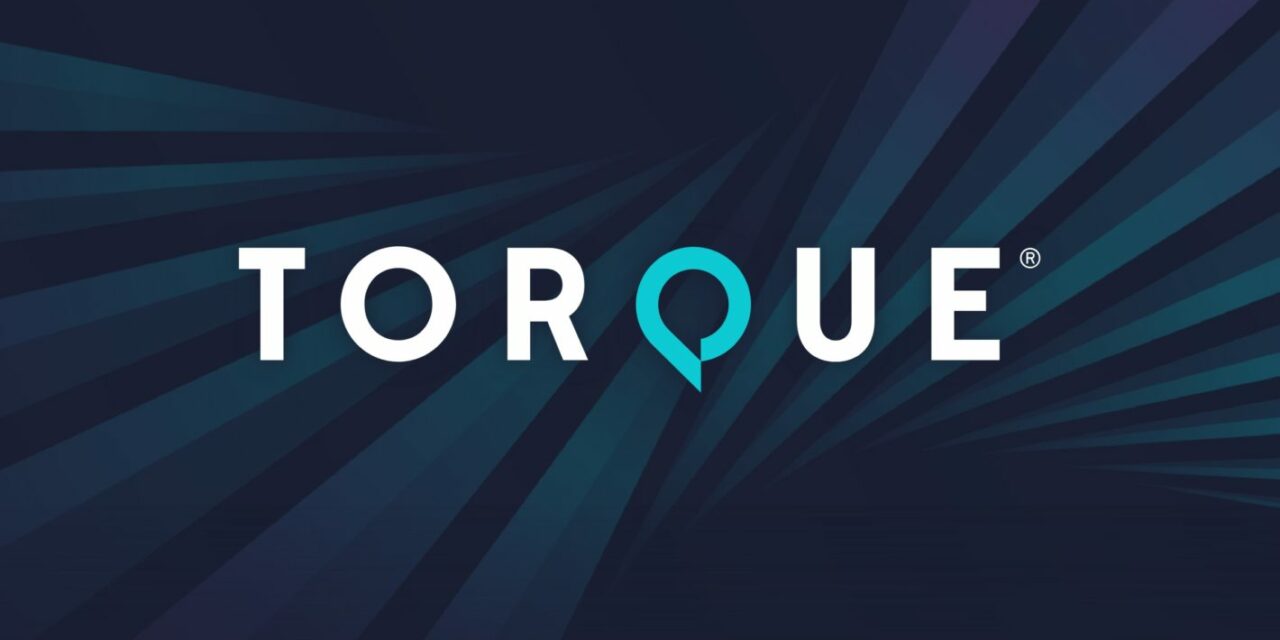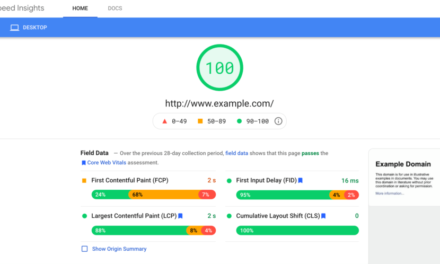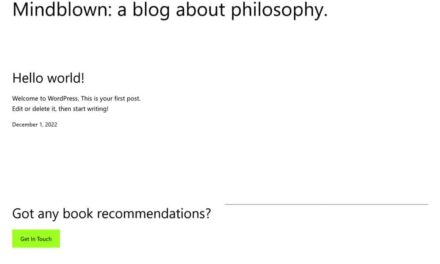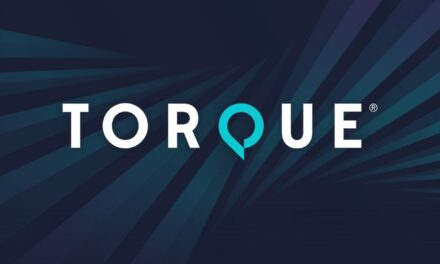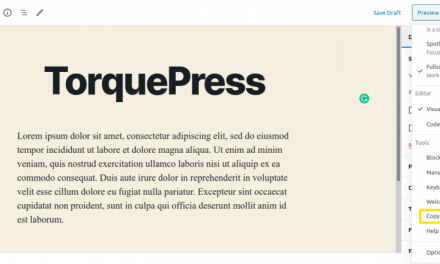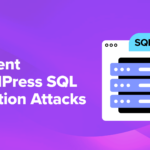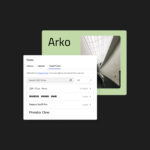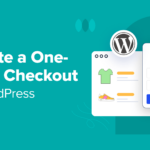Welcome to Press This, the WordPress community podcast from WMR. Each episode features guests from around the community and discussions of the largest issues facing WordPress developers. The following is a transcription of the original recording.
Powered by RedCircle
Doc Pop: You’re listening to Press This, a WordPress Community Podcast on WMR. Each week we spotlight members of the WordPress community. I’m your host, Doc Pop. I support the WordPress community through my role at WP Engine, and my contributions over on TorqueMag.Io where I get to do podcasts and draw cartoons and tutorial videos. Check that out.
The WordPress Repository has always been a great place to find powerful and free tools to extend your WordPress site. You can find plugins, blocks and themes, and you can even sort by features such as block compatible. And as of this morning, there are 302 block compatible themes or block themes listed on the WordPress themes section of the repository.
One of the newest of which is Frost and my guest today is Brian Gardner, a Principal Developer Advocate at WP Engine and the creator of Frost Theme. Brian, congrats on getting your theme into the repository.
And I know you’ve been on the show before, but let’s just give our listeners a reminder. How did you get into WordPress?
Brian Gardner: Well, Doc, thanks for having me back. Certainly glad to be here. I love talking about WordPress. I enjoy sharing my story. I don’t get to do it as often as I used to, so I’ll give the abbreviated version. Back in 2006, I was a project manager at an architectural firm, and I was by far one of the younger people working there.
And so by default, I became the computer guy. And so I taught myself a lot of things, back in the day. It was really right around Microsoft Office and all of that stuff. But, my curiosity about the internet and blogging, which was new back at that point, peaked. And so I started dabbling around with WordPress and wanted to just have my own blog.
And so through that experience, I figured out how to install a WordPress site and from there downloaded a free theme from a different repository, though it was, I think, deemed the official WordPress repository, but it was a different location. Grabbed a theme, started playing around, put it up, tweaked it. Created my own theme, gave it away on my site for links and downloads and email and exposure. And from that I started to land freelance work, people who wanted to have the theme customized.
So I called the vacation money, right? Cause I still had my full-time job and just kind of nights and weekends. They would pay a couple hundred bucks to do a thing or two and then from there I had a guy, a real estate agent from Boston who wanted me to do a whole custom design for him, which I did. And it was overkill for him cuz he just wanted a blog. And this was more of a sort of a CMS based, brochure site looking thing.
And so, I asked my audience what I should do with it, and then I followed up and said, would anybody buy this? And, the resounding audience echo was yes. And so I followed that up with the next smartest question, which was, how much would you pay for a premium WordPress theme? And at that point, things became real because there was a lot of people saying that they would spend money on it.
And so I bundled it, packaged it, called it Revolution, and started selling lots of Revolution. And, that was my window into WordPress. And then consequently the eCommerce side of WordPress by selling a theme. That’s the real quick version. Obviously some ups and downs and lefts and rights along the way.
Doc Pop: You know, that has me wondering, I know that you have plenty of examples on your site of themes that you’ve made. And you’ve sold themes as well. We mentioned at the top of the show Frost WP theme, which we’re gonna get into in a second. But I’m just curious, is that the first time that you’ve uploaded a theme to the WordPress repository for like the free theme section?
Brian Gardner: So Frost is not the first theme. It’s the first WP Engine theme that we submitted. But ahead of that, within the last 12 months, I’ve submitted four different Full Site Editing themes. Almost hard to believe, right? Almost 15 to 18 years that is the case, but it is.
So I personally have four themes up on the WordPress theme directory right now. All of them are Full Site Editing themes, and then Frost, of course, is the latest and the one with the most downloads already.
Doc Pop: Wow, congrats. And let’s just get into it. What is so special about Frost theme versus the other themes you’ve worked on?
Brian Gardner: Frost is actually the first theme I started creating that was a block based theme. I started about two years, almost two years ago, over the summer. And this was even ahead of my hire WP Engine when I realized the direction of where WordPress was going with at the time it was called Gutenberg Editor. But now we know Gutenberg as the exploratory plugin that brings the features into WordPress core. When I realized sort of what blocks were, how patterns worked and the trajectory of where this was all going, I got really excited. So two years ago I started creating this theme called Frost.
And at the time it was a Genesis based child theme. And so that was a little bit ahead of going and switching it over to a block-based theme. But shortly into my development of that, I realized, okay, I now get this and I now know where this can go. And so originally Frost was set up to be a very vanilla theme, but a powerful one because it had a lot of patterns and the idea behind it was sort of setting these patterns up as wire frames so that if you were an agency or a freelancer, it’d be very easy to build top to bottom pages of a website because each pattern sort of represents a certain section of either a homepage or an about page or a pricing page.
And so I was like, well, if I came up with a system, a powerful theme that had all of these sort of insertable with one click things, then people could then design with that opinionate them, add photos, images, change, text colors, and so on. And so Frost has, from that point, been arguably one of the most up to date and bleeding edge WordPress themes out there because I’ve obsessed over the development of Gutenberg, the plugin, WordPress core, and really sort of fine satisfaction in living on the front line in the bleeding edge.
And so Frost always supports and implements all of the things that were new as they came in through Gutenberg, which is okay, and we made that available once I came over to WP Engine. We brought Frost in, and it has been open sourced ever since, and available through GitHub and through the website.
But until WordPress 6.2 dropped, it was always deemed sort of experimental and not production ready and kind of use at your own risk, even though it was very, very stable. And so when I knew WordPress 6.2 was going to be arriving, I talked to our product teams and the vice president of product here at WP Engine.
I was like, look, I think Frost is like prime time and ready to go, and it’s my recommendation that we make it ready, put it on the repo, get more distribution out of it. Encourage people to use it, to learn from it, to fork it, to, to do whatever they want with it. And so we all collectively agreed and shortly after 6.2 dropped, we submitted Frost to the directory.
Doc Pop: I know you’ve always mentioned Frost as being kind of an experimental project, an experimental theme, boundary pushing, and I just always kind of thought of that as the things you were implementing in Frost were experimental. You can tell me if I’m wrong here, but I think what I’ve kind of come to realize is it was experimental in that it was just waiting for WordPress to get solidified.
It wasn’t that the features themselves were wildly experimental. It was more that you were waiting for WordPress 6.2 or something like it to come and say, look, this is a structure that you can build on now, and everything’s Stable and ready, ready for a theme like yours.
Is that a good way to put it?
Brian Gardner: Yeah, that, that’s mostly accurate. I mean, really what it came down to was, up until 6.2, the development of WordPress itself by way of the Gutenberg Plugin, Gutenberg is a plugin that’s now an experimental plugin that ships a new version every other week. And this is where they test and bring in new features that ultimately will land in WordPress core.
And so every two weeks you get a new version of Gutenberg, but WordPress core itself only updates on a three to maybe four times major release basis per year. And so what happens is within each of those three or four months, you’ve got all of these new things that are added to the Gutenberg Plugin.
So technically they’re at the disposal of people who wanna test them and play with them and use them. However, because it’s experimental, we always said Frost needs to be also cuz it requires the Gutenberg Plugin, which could at any given moment break. And it’s bad to encourage people to use something on a production based site that you know could potentially break.
And so the difference sort of between the development of WordPress Core and the Gutenberg Plugin kind of has slowed down because a lot of the features have arrived and are available. I realized, okay, now we’re at a point where WordPress itself is out there and the development of things that are new that could potentially break is slowing down.
Now is the time to do it.
Doc Pop: I think that’s a great spot for us to take a short break. When we come back, we’ll continue talking with Brian Gardner, a Principal Developer Advocate at WP Engine about the Frost theme and what makes it so unique in the WordPress Plugin repository. So stay tuned for more WordPress News.
Doc Pop: Welcome back to Press This, a WordPress Community podcast on WMR. I’m your host, Doc Pop, and I am talking to Brian Gardner from WP Engine. He’s a theme creator who just recently submitted the Frost theme, which is a project that he made with the WP Engine team to the WordPress plugin repository.
In the beginning of the show, we talked about that process of uploading it, and I think one of the things that stuck out to me, Brian, it’s felt very much like when 6.2 came out and you had this theme that you were very proud of, the Frost theme, you felt it was a really good way to kind of push the boundaries and show people what could be done with these themes. It really feels to me that WP Engine took this theme and decided to make it a flagship theme to really show people what could be done.
I’m wondering if that’s kind of how you think about this theme or what you think this theme serves. Both for the community, but also for like WP Engine, where you work as a developer advocate.
Brian Gardner: Yeah, so I talked earlier about the idea of it sort of being a wireframe theme. As it was originally built as we knew 6.2 was coming and as the release of what we call version 1.0, which is where we brought it to production ready. I did some design opinionation to it. So I’m like, okay, well now that this is actually gonna be in a place where a lot of people may download it, we really wanna encourage people to use it.
So it needs to actually be a little more interesting than it had been. So one of those things I did was I updated several of the black patterns that were in the theme to make them a little more usable and a little less just black and white-ish. I reset the color palette. I implemented an electric blue as part of the base color for it.
But part of WordPress now the capability is within a block theme. You can have what’s called style variations and that sort of gives it, we’ll call ’em skins, I guess is a good way to explain it. The ability for users to sort of change color systems for the theme. And so somebody could go in and choose the red version of Frost or the teal version of Frost or purple or orange.
And so there’s eight total, which I felt was a good place. And of course you can customize that to like the exact hex code you want also, right? That’s the beauty of the site editors being able to go in and change the color palette yourself. I opinionated the design. I made things a little more interesting and created a few more, what’s called layouts or full page patterns.
So if you wanted a pre-built homepage or an about page or a pricing page, or even a link page similar to Link Tree. Users could click and insert these sections all at once and then customize them from there. So I really tried to take it from sort of an experimental, educational theme to, Hey, let’s use this for something that people can actually, our customers at WP Engine or agencies, and freelancers and people could build actual websites with it.
Doc Pop: There’s two ways I see that you could have gone with a theme like this as sort of a big rollout of what you think a Full Site Editing theme should be. One is to have a very minimal page and just encourage people to build on top of it.
And the other is to really pack it with features and it feels like that’s kind of what y’all landed on is, is something for everyone. There’s Dark and light variations or as we kind of call ’em, like Developer mode variations for the views. There’s tons of patterns.
You’ve even got things that would be useful for things like testimonials, calls to action, things like that. Was there a moment, where y’all were kind of thinking about how do we know what’s too much to put in here? Or is the goal to just put in something for everybody so that if I’m opening up a bar that also has live music, I could download this and get it, but also if I was in a kitchen, I could do that.
Is that sort of the goal to cover everything or I don’t know. I’m rambling, but I’m just kind of curious how y’all went about thinking about that.
Brian Gardner: Yeah, that was always the problem, right? Like the idea of a monolithic theme. At least a downloadable single theme really is too much, right? WordPress powers 43 percent of the internet or whatever the number is. And there’s just so many different ways it can be used, which means like you could create a theme that just has 500 patterns and so much of that is not used on an individual basis.
And so for a theme that came with patterns and with colors and all this other stuff, It really was about maintaining a balance between, this is usable on several levels. Not all, but several, with common sections or patterns or things like that, that are pretty much you see on any kind of site, right?
Like a testimonial section can be used for a course creator or a food shop or a lawyer. So like trying to identify what are some of the types of sections that can kind of be used across varying niches. And so most of what’s in Frost is just that, which is a good place to start. It doesn’t have everything. It can’t do everything. But it’s enough to get most of the way there or at least show people how things can be done. And we’ll go from there.
The cool thing about WordPress and the way the theme update system works is that you can add patterns to a theme update and then deploy that update across all of the sites. And it doesn’t break anything cuz all it’s doing is just increasing the library in which you could draw from. And so like that’s part of what version 1.0 was. Get a handful of footers in there, some call to actions, because everybody needs a call to action on a website. Let’s see where it lands and what people have requested and where it goes. And we can always add more if we need to. And so that was sort of the decision process behind it all.
Doc Pop: Over on WP Tavern, Sarah Gooding wrote that “Frost could easily be used for building agency websites, portfolios, business sites and more. It’s easy to see developers using it as a starter for multiple projects, given its minimal design.” She also mentions that there is a forked version of Frost, your Powder theme, and I actually didn’t know about that.
But, can you tell us a little bit about Powder?
Brian Gardner: Yeah, so Powder was just something that I ended up doing for my own sake. Every once in a while I’ll do something for a friend o rprevious client, like just a sort of side project, custom design or something like that. And of course I would at the time always use Frost. But in most cases I was like personally it would just be easier to just have a stripped down version of a WordPress theme, something that was so vanilla, so basic that it would be like literally the ground floor.
And so what I did was I actually forked Frost and obviously renamed it and made it Powder, but then I stripped all the patterns and all the specialness out of it, and it’s just literally like a black and white canvas theme. No special templates, no patterns other than the header and footer that need to be there.
And so I just personally wanted my own thing to have as a starting foundation, because I’m a creator and I love design and I have hundreds of ideas that run through my head on a daily basis, just on cool ways to do design. And so it’s like, well, at least if I had my own version of something, I could, one, put that on the theme directory, but also it allows me to just play around with like the child theme system and say, oh, here’s a fun design let me just see if I could just knock something out without having to like recreate the wheel every time.
Doc Pop: And so with Frost, you started this as one of your kind of personal projects. You’ve now handed it over to the WP Engine team to kind of create something new and bigger. What’s going to get added to this theme? It already comes pretty packed.
Is the next step gonna be adding more patterns, or is the next step gonna be listening to the, you’ve already got a thousand downloads already, or a thousand users. Is it gonna be listening to them and kind of like making tweaks and fixes for now?
Brian Gardner: The answer to that question is yes, pretty much to everything you said. In fact, this morning I was adding a couple patterns. I did a workshop last week around conversion focused patterns and how to build them. And so what I did was I built four new patterns to demonstrate in the workshop. And so I was like, wow, this makes sense now that I’ve built these and people have seen them. And they’re very lightweight. And of course they’re all things that I think were relevant to a website. So I’m adding them to Frost as an update that might go out tomorrow. Along with a little bit more just sort of work within the file structure.
The style sheet and theme JSON to get a little technical are two files that handle styles. And as I find more ways to consolidate code and to optimize kind of how things are done from a coding and style standpoint. I’m doing a little bit of reorg just on things that are sort of recent with WordPress 6.2, and so just kind of optimizing it and doing little tidying up, but also adding some more value by bringing in some patterns and then at that point we’ll see how people are using it and what they think and what they want.
Doc Pop: This is another great spot for us to take a quick break, and when we come back, we’re gonna wrap up our conversation with Brian Gardner about the Frost theme and Full Site Editing themes. So stay tuned for more Press This.
Doc Pop: Welcome back to Press This, a WordPress Community podcast. I’m your host, Doc Pop, and I am with Brian Gardner today talking about the Frost theme that just went up on the WordPress.org theme repository. And Brian we’ve spent the show talking about the features of Frost and you can definitely pick up on how excited you are about Full Site Editing and about just theme design and web design in general.
I think one of the last things I wanted to ask you about is, this was a project that you started on your own, and then you joined WP Engine as a Principal Developer Advocate. How does releasing a theme like this fit into that role of a Principal Developer Advocate at WP Engine?
Brian Gardner: Well, obviously developer advocacy within a tech company is really all about educating the users, whether it be the software that the company itself produces or that the software is, is all based upon. So I was brought in part to sort of evangelize the use of WordPress. Continue to talk about how folks can, can use WordPress, can build with WordPress.
And of course, at the time Full Site Editing and block-based building, obviously something that’s very relevant. And of course we have our own products, right? So we’ve got, Local, the local development tool. We’ve got ACF, we’ve got obviously Frost, we have some of the Genesis products and stuff like that.
So it’s really just a mixture of these are our WordPress products and it’s our job to, to facilitate community around them, around the software. Some semblance of giving back, right? We have a core value of Committed to Giving Back. So there’s contributions back to WordPress in a way Frost and some of our other projects are examples of that.
And so it’s just our job to help educate and train and to foster the community. So, it’s the position I signed up for when Heather and I were talking about this, the WordPress side of developer relations did not exist at WP Engine. I was brought in as the first, and so it was really just an opportunity for us to kind of pave our own way and say, this is what we think this looks like.
And I think we’ve done a great job. We’ve got a couple members now, Sam Munoz, who’s a community manager with us, and Damon Cook also on the WordPress side of Developer Advocacy. And we just do our best to be as helpful as we can to support our internal products and to just continue to innovate WordPress.
Doc Pop: And this seems like a good spot to plug Build Mode, your weekly developer workshop. Why don’t you tell us about that?
Brian Gardner: So build mode is every Friday at 10:00 AM central time. It is something that Sam and I came up with last year and we said, let’s do something official. Let’s make this not a workshop or not a teaching thing, but more an interactive, immersive conversation. And so we usually have 20 to 25 folks every Friday morning.
It’s an opportunity for us to talk about things that are coming from customers or non-customers, just people who are building WordPress websites and have a WordPress based business. It allows us a little more insight and direct intel into pain points of this.
And it’s been a treasure chest of just insight, good market research, just all of these things. And we’re really developing a great community there. We have a lot of people who come back every single week. They make it a point to work their schedule around Build Mode because they don’t want to miss it.
And so we’re super pumped about that. Again, we talk about WordPress, sometimes what’s new with WordPress features that are coming, but also just sort of what services do you offer in your WordPress based business? So we get outside of the immediacy of building websites and just talk a little bit more about life and work balance and stuff like that.
So it’s great.
Doc Pop: And let’s wrap this up. Can you just tell folks where they can find more about you and Frost and build mode? What’s a good place for people to check out?
Brian Gardner: So personally my Twitter account is probably where I’m most active and easiest to get in touch with, which is @bgardner. FrostWP.Com is where you can see the Frost demo, where you can download it. You can see all the patterns, the styles, variations. And then Build Mode. If you go to WPEngine.com/builders, we have an events linked up in our menu, which then sends you into the build mode thing.
We usually have three or four weeks worth of signup, registration links ready for people. So feel free to go ahead and reserve your spot, and we hope to see you there.
Doc Pop: Thanks for listening to Press This, a WordPress community podcast on WMR. Once again, my name’s Doc and you can follow my adventures with Torque magazine over on Twitter @thetorquemag or you can go to torquemag.io where we contribute tutorials and videos and interviews like this every day. So check out torquemag.io or follow us on Twitter. You can subscribe to Press This on Red Circle, iTunes, Spotify, or you can download it directly at wmr.fm each week. I’m your host Doctor Popular I support the WordPress community through my role at WP Engine. And I love to spotlight members of the community each and every week on Press This.

